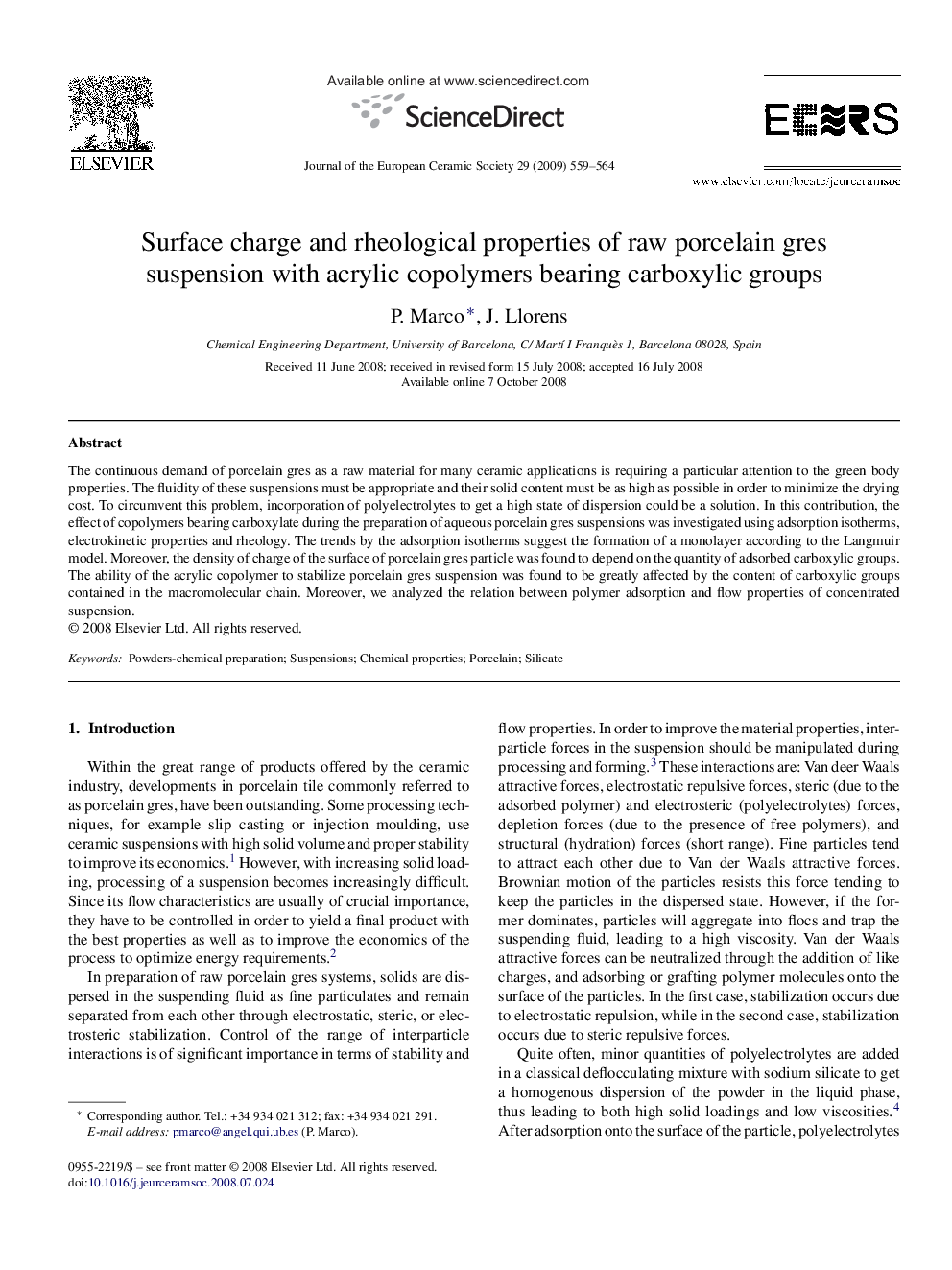| Article ID | Journal | Published Year | Pages | File Type |
|---|---|---|---|---|
| 1476904 | Journal of the European Ceramic Society | 2009 | 6 Pages |
The continuous demand of porcelain gres as a raw material for many ceramic applications is requiring a particular attention to the green body properties. The fluidity of these suspensions must be appropriate and their solid content must be as high as possible in order to minimize the drying cost. To circumvent this problem, incorporation of polyelectrolytes to get a high state of dispersion could be a solution. In this contribution, the effect of copolymers bearing carboxylate during the preparation of aqueous porcelain gres suspensions was investigated using adsorption isotherms, electrokinetic properties and rheology. The trends by the adsorption isotherms suggest the formation of a monolayer according to the Langmuir model. Moreover, the density of charge of the surface of porcelain gres particle was found to depend on the quantity of adsorbed carboxylic groups. The ability of the acrylic copolymer to stabilize porcelain gres suspension was found to be greatly affected by the content of carboxylic groups contained in the macromolecular chain. Moreover, we analyzed the relation between polymer adsorption and flow properties of concentrated suspension.
